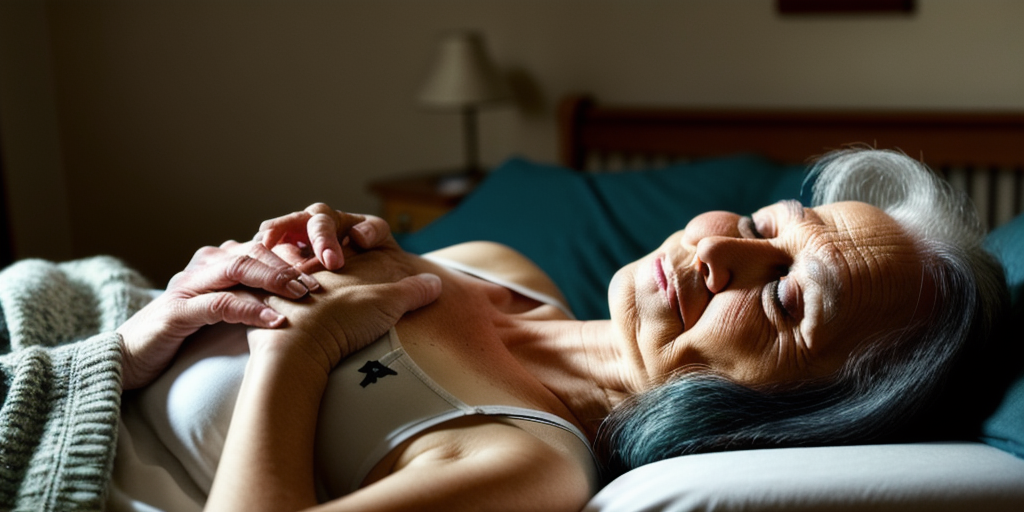Living with dying: A breathtaking collapse in the writer’s health – The Washington Post
On June 1, John Sutter was still looking the picture of health and free to move around the city. A week later, he was gasping for breath and without the oxygen to walk from his sofa to his kitchen. We had always known the disease would catch up with me in some form or another, but the speed and suddenness still took me by surprise. Sutter: I can’t say this transition is edifying or comfortable, but I still seem to be of relatively sound mind, still not in serious pain, still loving my friends and family and engaged with the world. I’ll be making the transition from Hopkins to hospice, and settling into my final months. No telling what’s down the road, but for now, I think I�’m good for a few more quacks for a little more time, Sutter says. For confidential support call the Samaritans on 08457 90 90 90, visit a local Samaritans branch or see www.samaritans.org.
Read full article ▼
It happened so quickly. On June 1, I was still looking the picture of health and free to move around the city. A week later, I was gasping for breath and without the oxygen to walk from my sofa to my kitchen. We had always known the disease would catch up with me in some form or another, but the speed and suddenness still took me by surprise. It probably shouldn’t have. For the past six months, my doctors had been looking at me with a quizzical eye, noting that I was in much better shape than a Stage 4 Ewing’s sarcoma patient who had forgone systemic chemo treatment should normally be. “It’s kind of amazing,” one of them said. “We have no real scientific data on this, but I can’t help feeling your attitude is part of it. But whatever it is, keep doing it, we’ll take it!” I, of course, began to feel as though I might indeed be charmed. Nobody who met me could believe I was really sick — and I began to believe this resilience might just go on and on. I knew the science said otherwise, but I was a bit self-satisfied and a bit smug about still being able to do a downward dog. Hubris! My anchor oncologist, Karim Boudadi, was also glad to see me doing well, but he never failed to offer a gentle reminder to do everything I wanted now rather than put it off. And I’m glad I took his advice. I undertook the “ wear more cashmere, go to Paris ” treatment. I made sure to get to Seattle to celebrate Passover with my sister, brother-in-law, nephews and their expanded friend group — an important event on my calendar for more than four decades. When DOGE rode into D.C., I amused my radiation therapists with my “radiation and demonstration” protocol, which took me directly from photon therapy to pickets at a wide number of federal agencies. And I visited many of my close friends, enjoying the rapport that comes from shared times and experiences, from a communal passion for justice and “good trouble,” from a mutual love for the written word and for each other. I am so grateful for all of that. Because the transition from health to infirmity was brutally swift. That first week in June, I started to notice a slight shortness of breath, and my right arm bone, where the cancer had metastasized, was achier and feeling weaker. So on June 5, I went to Sibley Memorial Hospital for a scan to see what was going on. Afterward, when I returned via Metro, it took me at least half an hour and much gasping to get myself the five blocks home. That whole weekend, I gasped for air, which confirmed that I was unwilling to have that be a way of life. If that was my future, I wouldn’t be buying into it. My brother, Gene, arrived on the following Monday. On Tuesday, the team at Sibley removed about five cups of fluid from my lung. And the next day, almost exactly eight months since the leading adult sarcoma expert at Johns Hopkins had met with me and laid out my options and my roughly year-long prognosis, I was approved for home oxygen — and a narrower road ahead. It’s ironic that the publication of my first article about learning I was terminal appeared in The Washington Post that very week. In it, I observed that I was about eight months into my projected terminal year — still enjoying life and not yet a “dead duck.” Now, here I was, a few days later, unable to easily breathe or move and feeling quite a bit closer to my final quack. I can’t say this transition is edifying or comfortable, but I still seem to be of relatively sound mind, still not in serious pain, still loving my friends and family and engaged with the world. In the next month, I’ll be tying up some loose ends, making the transition from Hopkins to hospice, and settling into my final months. I am still feeling good about my choices. Still interested in the philosophical landscape of how we categorize luck and loss and what makes life worth living. No telling what’s down the road, but for now, I think I’m good for a few more quacks.

